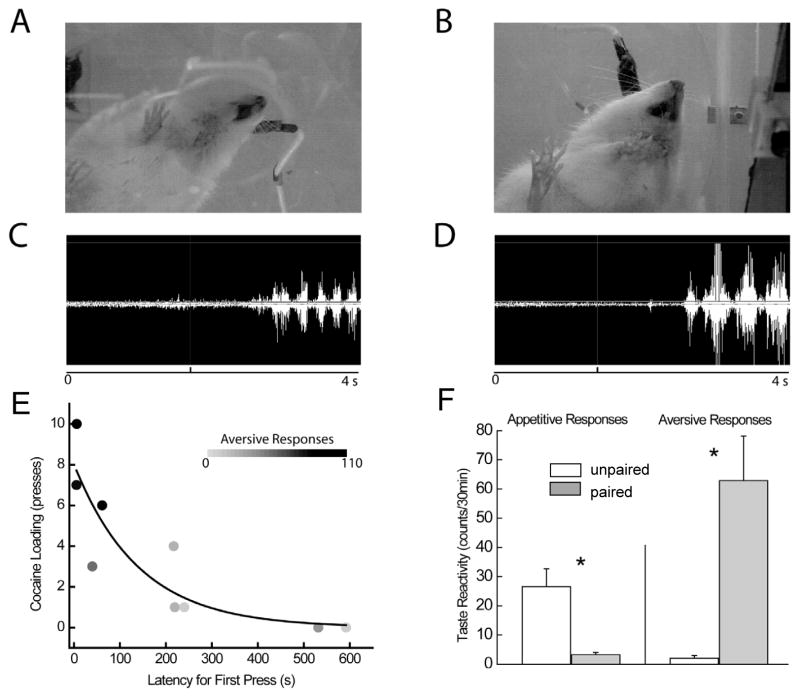Figure 1.
Behavioral responses to saccharin that predicts delayed cocaine. Before learning, rats exhibit mostly appetitive orofacial reactions to infusion of the saline-paired tastant (A) but aversive reactions to the one paired with impending cocaine (B). Orofacial responses are reflected in EMG activity of the anterior diagastric jaw muscle. EMG activity occurred in rapid, low-amplitude bursts indicative of licking shortly after infusion of the saline-paired tastant (C). These responses occurred during the infusion of the cocaine-paired tastant as well, but longer duration, higher-amplitude contractions indicative of aversive taste reactivity also were observed (D). Cocaine-induced devaluation was correlated with motivation to take cocaine. Drug loading was correlated both to the latency to make the first press and the expression of aversive taste reactivity (plotted in shading, E). Taste reactivity counts (mean ± SEM) revealed appetitive taste reactivity to the tastant paired with saline and aversive taste reactivity to the one paired with impending cocaine (F). * denotes significant differences, p < .05. Figure modified from Wheeler et al. (2008) with permission from Elsevier.

